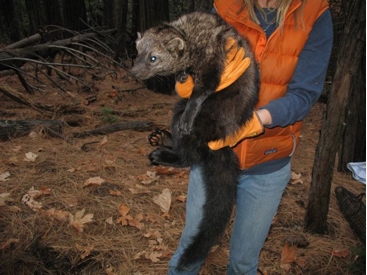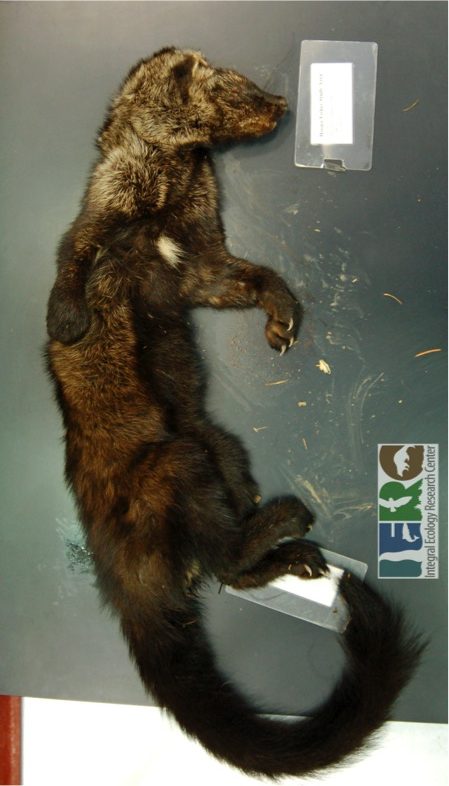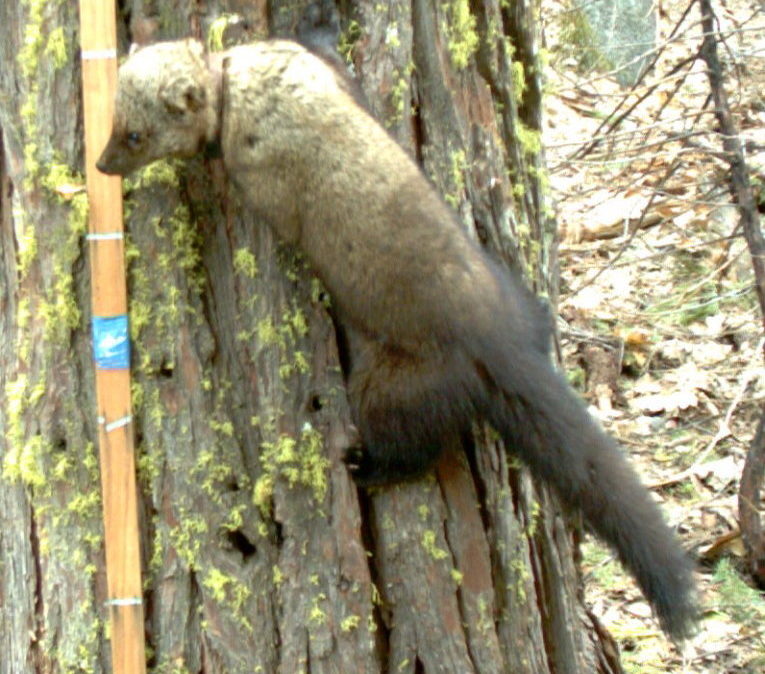Many of CSERC’s wildlife camera efforts are set up with the goal to hopefully capture a photo of the rare Pacific fisher. The Pacific fisher is a carnivorous mammal in the weasel family with strong claws, powerful jaws, and agility that allows them to be extremely adept at chasing prey high in trees or for leaping from one tree to the next. They prey on squirrels, mice, shrews, voles, birds, and fruits. In drought years, they will supplement their diet with berries, insects, and especially with fungi. Fishers prefer a continuous forest habitat. They are found in mature conifer and mixed hardwood conifer forests - typically between 4,000-7,000 feet in elevation.


Pacific fisher populations declined for most of the past century. Fisher population recovery is proving difficult, especially as fishers continue to face many new threats such as climate change, high severity wildfires, rodenticide poisoning, and habitat loss. Currently, the Pacific fisher is absent from nearly 240 miles of its former range extending from Yosemite National Park northward.
The decline of fisher populations began in the 1800s when luxurious pelts were in high demand. Due to the fur trade, many members of the weasel family, such as fishers, minks, and otters, were nearly hunted to extinction. In the 1940s, California banned the trapping of fishers, but their numbers continued to decline due to habitat loss from clearcut logging, the loss of old growth trees to logging, and new development. Since then, severe forest fires, prolonged drought, and bark beetle-caused tree mortality have led to additional loss of mature forest stands that are critical habitat for fishers. Other factors contributing to the decline of fisher populations are vehicle strikes, disease, and poisoning from either eating rodenticides directly or from feeding on prey that died from the poisons. Rodenticides are widespread in many forest areas due to its use at illegal marijuana grow sites.
In response to the decline of the fisher population, scientists have been intensively gathering data on fishers in the southern Sierra Nevada since 2007. These surveys led to the discovery of the first known female fisher den in Yosemite in the spring of 2011. From 2009 to 2015, Yosemite biologists conducted fisher monitoring in Yosemite Park with significant assistance from CSERC. The goal of all these years-long science survey projects has been to monitor the movements and study the ecology of fishers to see if the fisher expands its range – including repopulating areas in the Stanislaus National Forest where it once was widespread.


This winter, CSERC staff participated in a science meeting that shared new science and research updates about the Pacific fisher. This Fisher Working Group was created more than a decade ago to share timely information so as to best maintain healthy, viable fisher populations in California.
Recent surveys reveal that the fisher may be expanding its range slightly northward, and that fishers may also be adapting to survive at higher elevations than was previously known. Last year a fisher was captured on camera at a photo-detection station at around 11,000 feet in elevation in the Southern Sierra!
In partnership with the US Forest Service, CSERC continues to set up baited photo-detection camera stations in remote forest areas to search for the elusive fisher. One key goal is to identify which suitable habitat areas are in most need of protection in order to assist in the recovery of this rare furbearer species.

